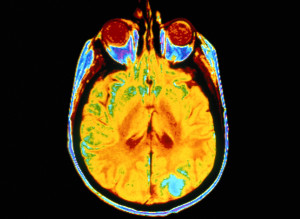Cocaine, Meth, Wreak Havoc With the Blood-Brain Barrier
The blood-brain barrier (BBB) is a network of tiny blood vessels (capillaries) that separates the interior of the central nervous system (brain and spinal cord) from the rest of the body’s circulatory system. This separation is required to help the brain maintain a stable internal environment and function properly; it also helps protect the brain from infectious microorganisms. Cocaine and methamphetamine can significantly damage normal function in the blood-brain barrier; in turn, this damage can open up the brain to infection and other processes that can produce severe or life-threatening changes in brain health.
Blood-Brain Barrier Basics
Capillaries are the body’s smallest blood vessels. They sit at the junction between the arteries—which carry oxygen-bearing blood to various organs and tissues—and the veins, which carry oxygen-depleted blood and carbon dioxide waste from the organs and tissues to the heart (on the way to their eventual destination point in the lungs). It’s inside the capillaries where exchange of the oxygen and carbon dioxide content in the blood occurs.
In every location except the blood-brain barrier, the capillaries have relatively large openings in their walls that allow large and small molecules to move in and out of the bloodstream. This level of access means that any required substance produced in most of the body can easily travel through the bloodstream and get where it needs to go. However, it also means that conditions in the tissues fed by the capillaries can change rapidly and relatively chaotically as different molecules move in and out of circulation.
The central nervous system in general (and the brain in particular) can’t handle the sorts of fluctuations that occur when all molecules can flow easily through the capillary walls. In fact, these fluctuations would destabilize the brain to the point where it wouldn’t be able to perform its function as the body’s command and control center. In addition, if any molecule could easily enter the central nervous system, then infectious microorganisms could get to the brain and wreak all sorts of havoc on the organ’s structures and activities. In order to help prevent these possibilities, the capillaries in the BBB are very tightly constructed and lack the large openings found in other capillaries. In addition, supporting cells (called astrocytes) sit in the barrier outside the capillary walls and further block any influx of unwanted molecules and microorganisms.
The Effects of Cocaine and Methamphetamine
For a number of reasons having to do with how cell walls are constructed, molecules that dissolve easily in the presence of fat can pass directly through the capillary walls in the blood-brain barrier. Among the molecules that can access the central nervous system in this way are cocaine and methamphetamine. Once inside the central nervous system, these drugs produce mind alteration and a variety of other effects by altering the normal levels of certain neurotransmitting chemicals—such as dopamine, norepinephrine and serotonin—that support proper brain function by passing on required messages between millions of nervous system cells called neurons.
 One of the consequences of neurotransmitter alteration by cocaine and methamphetamine is a significant increase in the amount of heat retained inside the brain and body. If heat levels get too high, they can trigger a condition called hyperthermia, which literally means “overheat.” In turn, hyperthermia can produce serious damage in the capillary walls inside the blood-brain barrier and lead to the formation of significant gaps that give access to dangerous molecules not usually allowed into the central nervous system’s restricted environment.
One of the consequences of neurotransmitter alteration by cocaine and methamphetamine is a significant increase in the amount of heat retained inside the brain and body. If heat levels get too high, they can trigger a condition called hyperthermia, which literally means “overheat.” In turn, hyperthermia can produce serious damage in the capillary walls inside the blood-brain barrier and lead to the formation of significant gaps that give access to dangerous molecules not usually allowed into the central nervous system’s restricted environment.
Apart from its role in hyperthermia, cocaine produces chemical changes in the capillary walls that lead to the formation of abnormally large points of entry through the BBB, according to a study published in 2010 in Blood, the journal of the American Society of Hematology. These chemical effects are particularly prominent in cocaine users who have HIV infections, and the authors of the study believe that the relatively rapid advancement of HIV’s brain effects in cocaine users stems from the ability of both cocaine and HIV to damage the capillary structures in the blood-brain barrier. Cocaine may also damage the BBB by increasing the flow of blood plasma to the brain, or by encouraging an excessive flow of the neurotransmitter serotonin from the body to the brain. In addition to its role in hyperthermia, methamphetamine can apparently damage the blood-brain barrier through a direct, toxic effect on the capillaries within the barrier.



